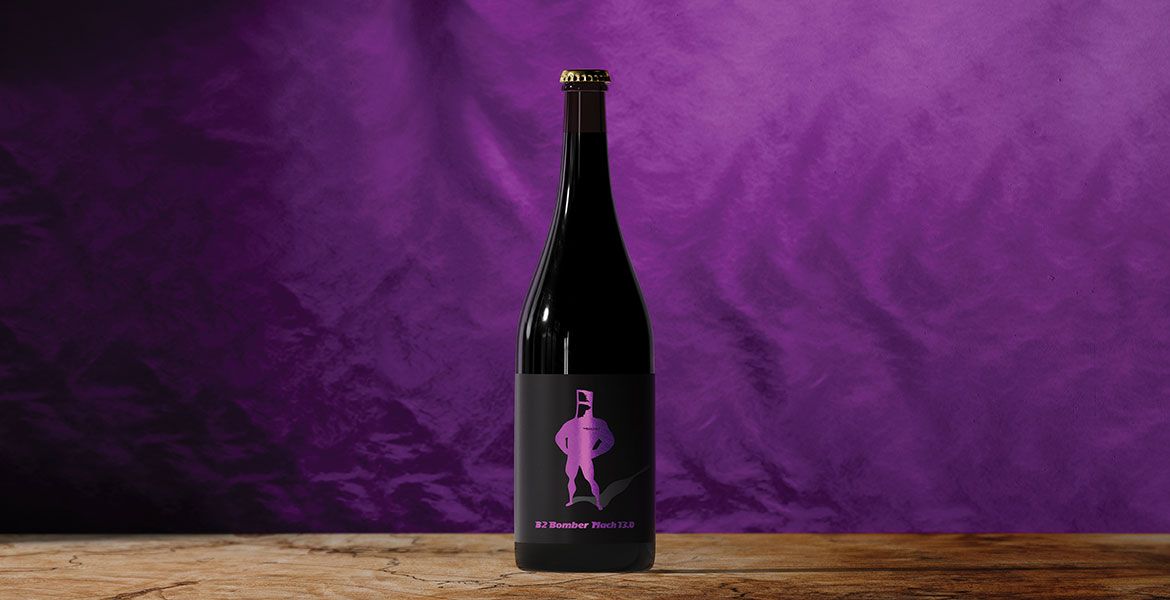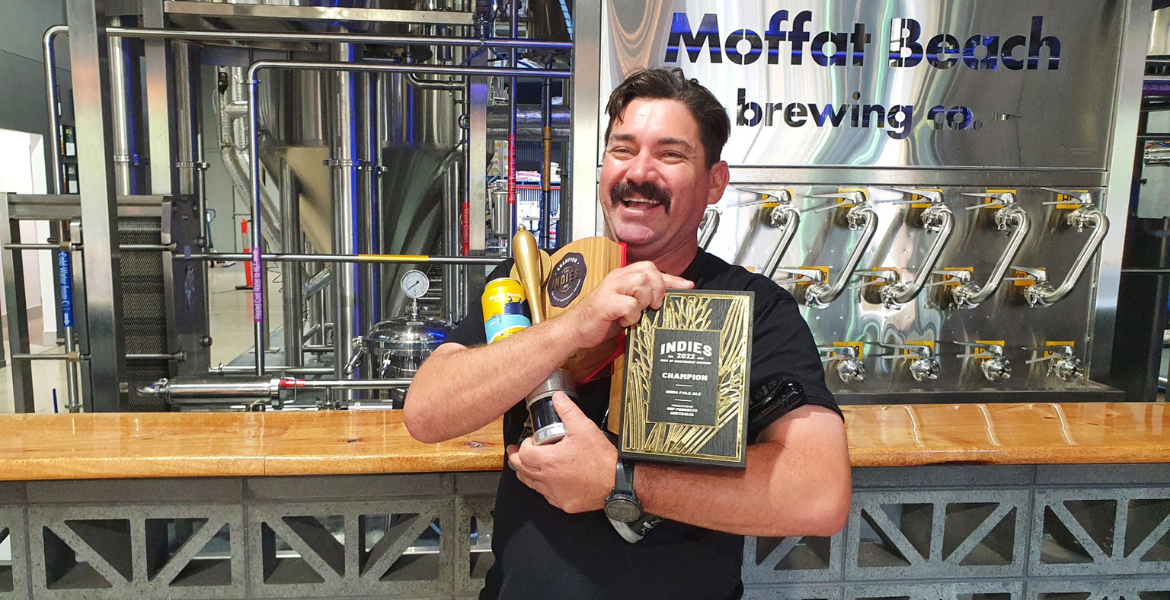If you ask Australian craft beer drinkers – or brewers, for that matter – to name their beer epiphany, Little Creatures Pale Ale would crop up in more stories than most. Indeed, we'd wager that a survey of all drinkers – at least those with a few years of discernment under their belts – would end with Creatures Pale and Coopers Original Pale Ale at the top (with Stone & Wood Pacific Ale chasing them down hard).
It was the first beer to introduce the hop forward American pale ale style that was driving the US craft beer boom to Australia in a serious (and high quality) manner and when it was named Champion Beer at the Australian International Beer Awards not long after the turn of the Millennium it was something of a landmark moment.
So, for the third entry in our "Story Of..." series, we decided to take a look at this modern Australian icon – a modern Australian icon that's just donned a new look after the brewing company ran a competition for artists to design a new label.
However, for this Story Of... we decided to do things a little differently.
The origin story of Little Creatures Pale Ale (or Live as it was in its earliest days, in reference to the live "little creatures" – ie yeast – in the beer) has been told many a time. How Matilda Bay founder Phil Sexton was enticed back to help launch another Australian brewery and designed the beer in partnership with winemaker and Little Creatures foundation head brewer Janice McDonald. How their goal was to create a version of American pale ales that would be more attuned to Aussie tastes.
Indeed, another former Creatures head brewer, Alex Troncoso, spoke to this site about it back in 2011:
“There’s a story that Miles [Hull – part of the Little Creatures team from day one] tells about when they were first going to open the doors of the brewery to the public. All the bar staff were standing around waiting to taste the beer. When they tried it, they all had blank stares on their faces.
"It was a gutsy move to make that beer back then – so hoppy and bitter. They used to have a celebration when they sold a pallet of beer in a week; it didn’t happen overnight. There’s a little bit of faith and luck and hoping and praying and then hopefully, eventually, you get there in the end."
Instead, we thought we'd focus on those brewing the beer today. What's it like to take on the mantle of brewing such an iconic beer? Has it really changed, as some claim, or is it more a case of palates changing over time – the old "lupulin threshold shift"? Has the addition of a second brewery had an impact? Is there more pressure brewing a beer when it's so widely loved?
Answering on behalf of his brewing team is Russell Gosling, head brewer at the company's original home in Fremantle.
Is there extra pressure being tasked with brewing such an iconic and much-loved beer?
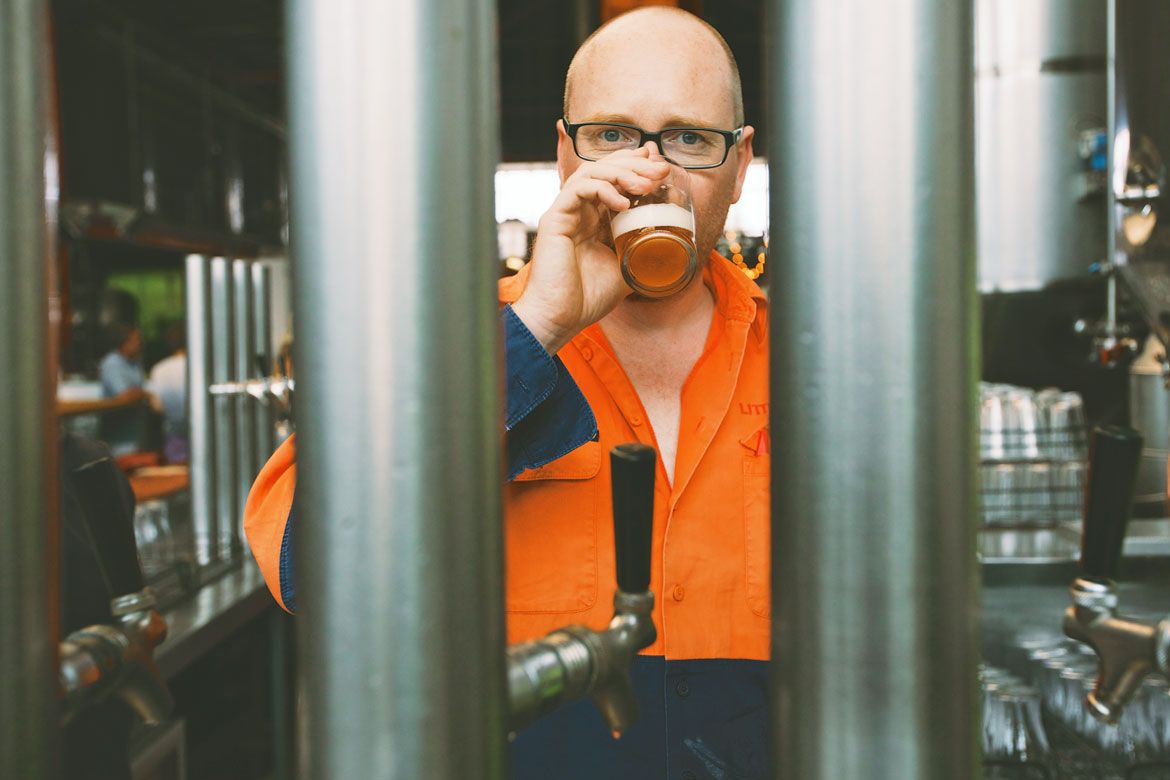
Russell Gosling (pictured above): There is no extra pressure from a beer icon perspective that requires application. The beer is not pasteurised or sterile filtered, however, so we are most fastidious with our hygiene and sampling plans, which we mandate to avoid high cost quality failures. These requirements (to make sterile beer) tend to invoke fear and trembling in most new starters.
As someone schooled at a Catholic Convent, in the murky English East Midlands (where I developed Sphenisciphobia: a fear of nuns), the enigmatic pursuit of making sterile beer often reminds me of the numinous experience “mysterium tremendum”. That is, a curiosity before which brewers both tremble and are fascinated, both repelled and attracted. Like watching certain scenes from the Blues Brothers, if that helps.
In fact, one individual once told me in an interview that it was not possible to make sterile beer; “Can’t be done,” he stated.
“You’ll discover the craft that is Little Creatures Pale Ale” was my repost. “You’ll have an opportunity to learn.”
With an audible gulp, he stuttered and coughed to divert the conversation!
How has the use of hops in the beer evolved over time?
RG: The principal hop varieties (East Kent Goldings, Cascade & Chinook) and mass (addition rates) have not changed over time – the only contrast being seasonal variations (oil content etc). Initially, the Cascade used was wholly from the US; over time, however, we have introduced Australian Cascade too, with the aim of working to a 50:50 hemisphere split.
Why? Well a number of reasons: they are very good hops, we want to support the local industry, it helps de-risk supply and we discovered early on that the leaf hops [hop flowers as opposed to compressed pellets] peak, in other words open up a little, and then start to deteriorate as they oxidise. This approach then allows us to benefit from two peaks during the year and infuse (blend) across the harvests as one arrives (fresh) and one goes (ages).
We have found that the US Cascade is more assertive and rugged, whilst the Australian Cascade is more refined and delicate (both have their merits).
We have introduced what the recipe terms as “other” hops too; these (typically Ella, Simcoe, Riwaka or such like) are a small addition that depend on availability. The “other” component was introduced for two reasons.
Firstly, to inject some complexity into the hop grist, which allows the brewer to tweak the hops when the leaf hops start to age, or if the aroma needs a lift – if, say, the oil content is low in a given crop year for example you can juggle things, within reason, to improve the outcome.
Secondly, in a market where demand outstrips supply, the annual scavenge for hops creates some scary unknowns: can we guarantee we’ll secure what we want? To de-risk this, we try to obtain one “other” hop from each hemisphere's harvest – just in case we get caught with our pants down, which thankfully has never happened.
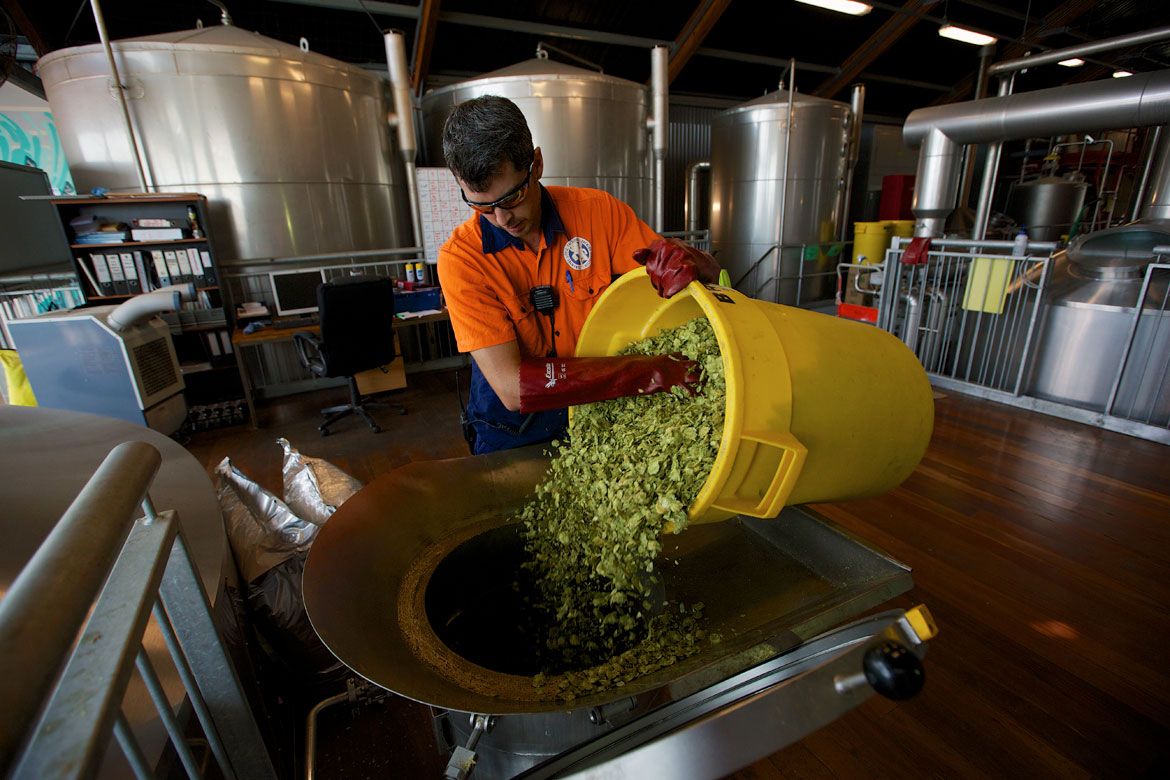
The only further component that has changed is the hopback [where the hop flowers are added during the brewing process]. The original hopback is now with our friends at White Rabbit. It is in reality a giant homemade teabag contraption. In 2008, when we installed the Steinecker Brewhouse in Freo, we progressed to the superior Rolec Hopnik; for us it was like getting a boob job!
People claim the beer isn't what it once was? Is it? And why do you think people would make such a claim?
RG: It is absolutely the same – arguably better. As a team we have learnt significantly over the years and have made some meaningful process improvements which have improved the quality and consistency of the product. This is something we have chosen not to champion externally – beer is a humble beverage!
Putting lupulin threshold shift to one side [the theory that one's palate adapts over time to require more hop bitterness to achieve the same perceived result], I do think that the beer landscape has changed in recent years and that this has, without doubt, shaped the consumers' perceptions regarding our Pale Ale.
What has changed? More commonly now brewers are dry hopping their pale ales to achieve the desired hop aroma using T90 pellets. At Little Creatures, we are steadfast in our outlook regarding the use of leaf hops in our hopback as our method of choice to obtain our signature aroma profile.
The outcome of the two methods produce markedly different results. Dry hopping with T90s tends to shift the beer towards what I would describe as raw, green (vegetative) and astringent notes – the aroma though is somewhat punchier. The use of leaf hops results in a more cultured beer; it is delicate, refined and integrated – the aroma is less assertive though.
I have a rock 'n' roll analogy here comparing the Rolling Stones (leaf hops) and the Sex Pistols (T90s) which I can share over a beer next time we meet if you’re interested (not many are). As dry hopping has become the norm, people, I believe, now hold the view that we have changed the beer, because the aroma is not as they remember it was; this is simply not the case, it is, I believe, their perceptions that have changed.
I would like to point out that my comments make no judgement on the appropriateness of either method – my point is more that brewing is a process of compromises: the brewer makes the choice. I would add, though, that we all have a copy of Never Mind the Bollocks somewhere, which we enjoy now and again, but we all listen to far more Rolling Stones!
When young brewers join the brewery are they aware or made aware of the position this beer holds within Creatures and the wider Australian beer culture?
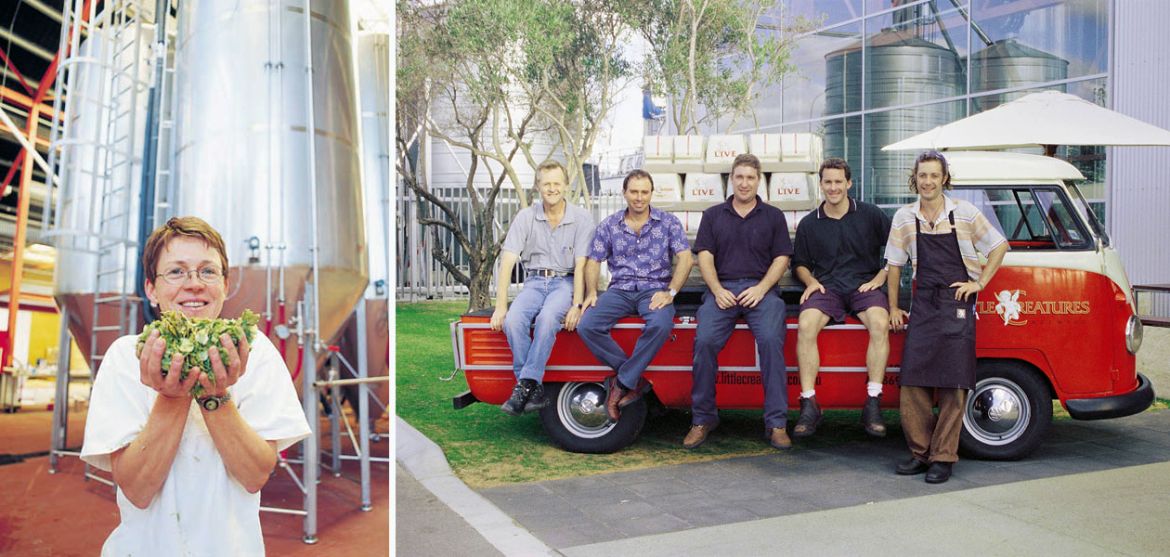
RG: I would like to think each brewer is aware (because we don’t specifically call this out; perhaps we should?). They certainly have a positive view of the beer (for many it’s their epiphany beer), our history and recognise our elder statesman position here in Australia with regard to the current US led craft beer movement. Here at Little Creatures, Pale Ale is King, it doesn’t take long to figure that out!
Each brewer has an apprenticeship period-cum-initiation phase: it primarily involves stock taking in the hop store (weekly) until you’ve developed a real close affinity for our hops. By my own admission, it’s a bit of a brothel, the hop store, and it requires some commando style action in order to navigate your way around the mountain of big 22lb leaf hop boxes – it’s not for the faint hearted, is somewhat cumbersome, but it does act as a reminder of our love for hops and the effort we go to in order to make Little Creatures Pale Ale the beer it is.
How did you manage the challenges of brewing the beer in Geelong as well as Freo?
RG: To be honest, this was perhaps more straightforward than you would initially think: they have the same kit, materials, people (several brewers transferred from Freo), process standards and documentation. We put together a set of product matching limits and devised an emulation plan; from there the team at Geelong (led by my esteemed friend Warren “Paisley” Pawsey) did such an outstanding job that it would appear that brewing the beer in Geelong was not such a challenge as everyone first feared.

How many tonnes of hop flowers do you think have gone into making it since day one?
RG: My word, this requires maths! I’ve just done a quick back of the fag packet calculation and for leaf hops for Pale Ale alone I reckon we’ve used circa 140 tonnes of cones since day one.
Does the brewery get fan mail for the beer? If so, any particularly special or funny examples?
RG: Haha! Fan mail I would suggest is severely light on and perhaps old school. We do receive the odd handwritten letter from time to time, which is received like a rare museum relic: with heartfelt affection, and then distributed to the team with commentary along the lines of “This is how people used to do things”, “Really?”, “Well, yes…”
From memory, the fan mail of old was somewhat similar in content to an old-fashioned love letter – they presented a description of their first introduction to LC Pale Ale, declaring how they’d fallen in love, concluding with a statement of lifelong commitment. I suspect we’re now divorced and they’ve moved onto younger reproductions.
Do you see it reaching 150-years-old like Coopers Sparkling?
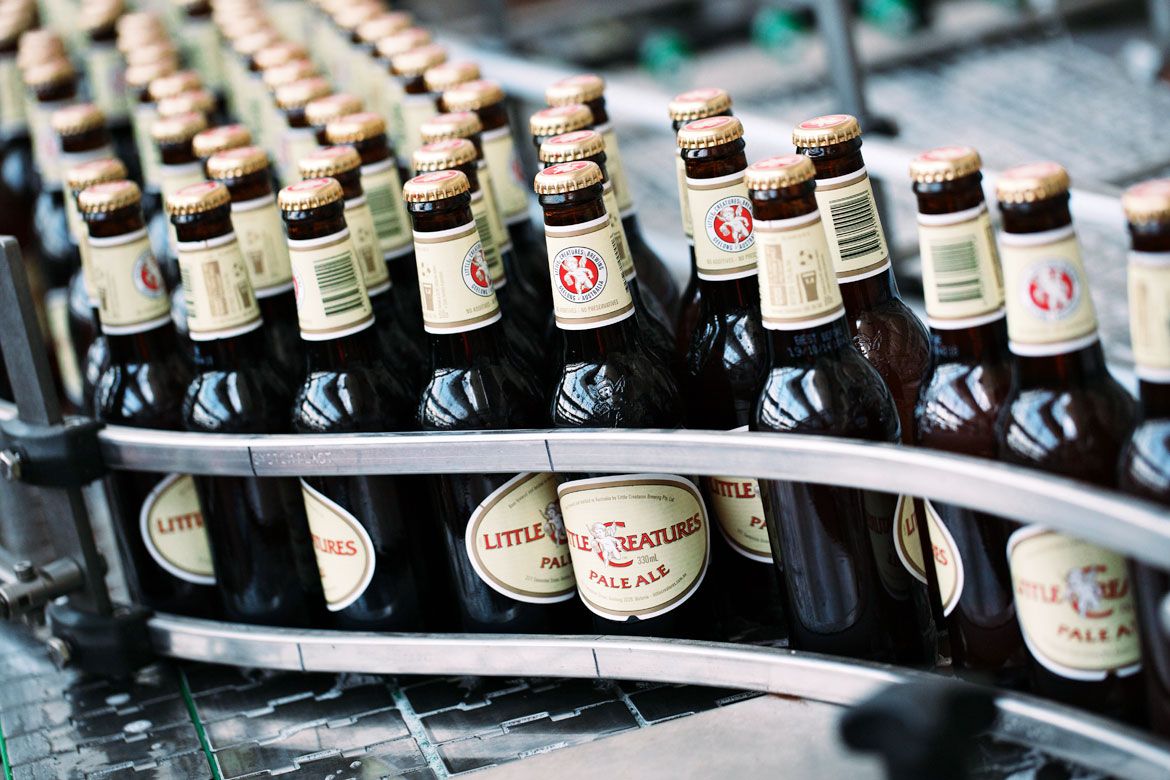
RG: I would love for that to happen. From a beer perspective I don’t see why not; we are well positioned capability wise to achieve beer excellence for the long term: people, plant, philosophy, culture of continuous improvement etc.
Of course, the big unknown we have to consider is our friends in marketing (God help us!): history tells us this might be the major hurdle to achieving this goal. What springs to mind is a scene from Flight of the Conchords – too many dicks on the dance floor – if there’s too many of them, and they start dancing, who knows what will happen!
Thanks, Russ, for your insight, honesty and colourful analogies!
Whether those who believe the beer has changed will reconsider after reading just how much attention goes into maintaining the beer's identity and consistency is unlikely. Similarly, those who no longer drink it because it's "mainstream" and, for that matter, part of a big brewing empire, may not return either.
But no one can doubt the impact the beer has had on the country or, indeed, the efforts that Russell, Warren and their brewers put into creating a high quality brew. And, looking at the broader picture, if Little Creatures Pale Ale really is mainstream now, then the mainstream is a lot better off for it.
Next up in the Story Of... series will be Bridge Road Brewers' Chevalier Saison.
You can read about Boatrocker's Ramjet here and Feral Brewing Watermelon Warhead here.
NB: If you're reading this before July 22, 2016, we've got a case of the new look Little Creatures Pale Ale to give away in our Friday newsletter going out on that date. If you haven't signed up, you can do so by entering your email address in the red Newsletter signup box on this page.




